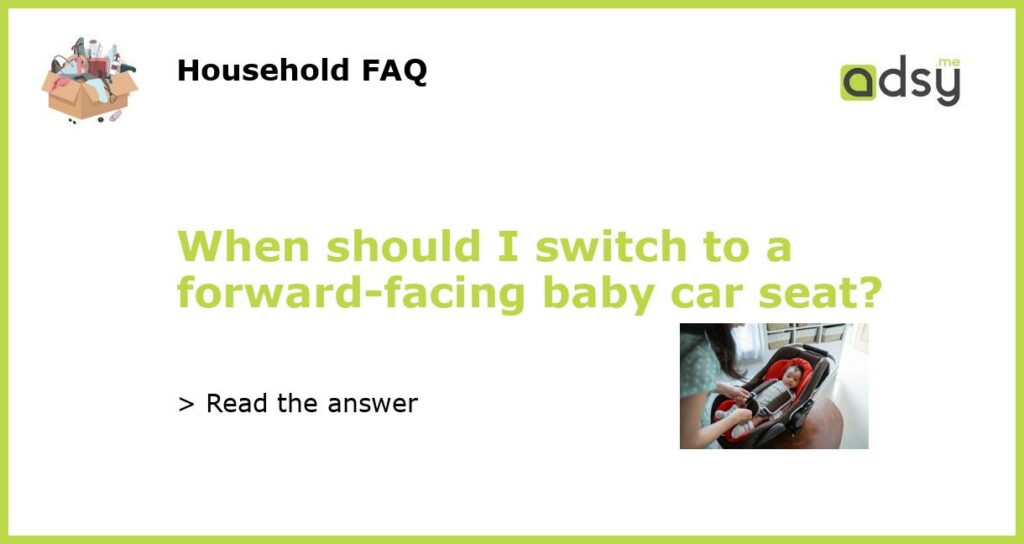Why a forward-facing car seat?
A forward-facing baby car seat is the next step after an infant car seat. Most commonly, these seats can accommodate children between 20 to 65 pounds or age two to four years old. The primary purpose of a forward-facing car seat is to provide maximum protection for your child in the event of a car accident. It is designed to cradle your child’s head, neck, and torso in a secure and comfortable manner. Unlike an infant car seat, a forward-facing car seat is placed facing the front of the vehicle, which provides your child with a better view of the road.
Understanding regulatory requirements
According to the American Academy of Pediatrics (AAP), children should be in rear-facing car seats until they reach the age of two, or until they have reached the highest height and weight allowed by the car seat manufacturer. After that, parents can choose to switch their child to a forward-facing seat once they have met the minimum weight and age requirements outlined by car seat manufacturers. However, the AAP recommends that children remain in a rear-facing seat for as long as possible, up to the height and weight limits of the car seat.
Assessing your child’s readiness
While age and weight are the primary considerations when deciding when to switch to a forward-facing car seat, it’s also essential to evaluate your child’s readiness. Consider whether your child is mature enough to sit up for long periods and follow instructions, as this is an important part of staying safe in a car seat. Young children tend to fall asleep during long car rides, so keeping them in a rear-facing seat may be beneficial in terms of head support and preventing slumping. However, as your child grows and becomes more active, you may find that a forward-facing seat is more appropriate.
Choosing the right seat
When you decide to switch to a forward-facing car seat, ensure that you pick the right one for your child’s height, weight, and age. Carefully read the manufacturer’s instructions and safety warnings to ensure proper installation of the seat in your vehicle. Generally, forward-facing car seats come with harness straps to secure your child, and booster seats use the car’s seat belt. Keep in mind that it’s essential to replace car seats and booster seats that have been in a crash, even if there is no apparent damage.
The Bottom Line
A forward-facing car seat is the next step in car safety once your child has outgrown the rear-facing seat. Ensure that your child meets the minimum age, height, and weight requirements before switching to a forward-facing seat. As always, carefully read the manufacturer’s instructions and safety warnings, regardless of your child’s age or car seat type. Finally, be sure to follow all state and local regulations regarding car seat usage, and stay up-to-date on car seat recalls and safety announcements from the National Highway Traffic Safety Administration.






